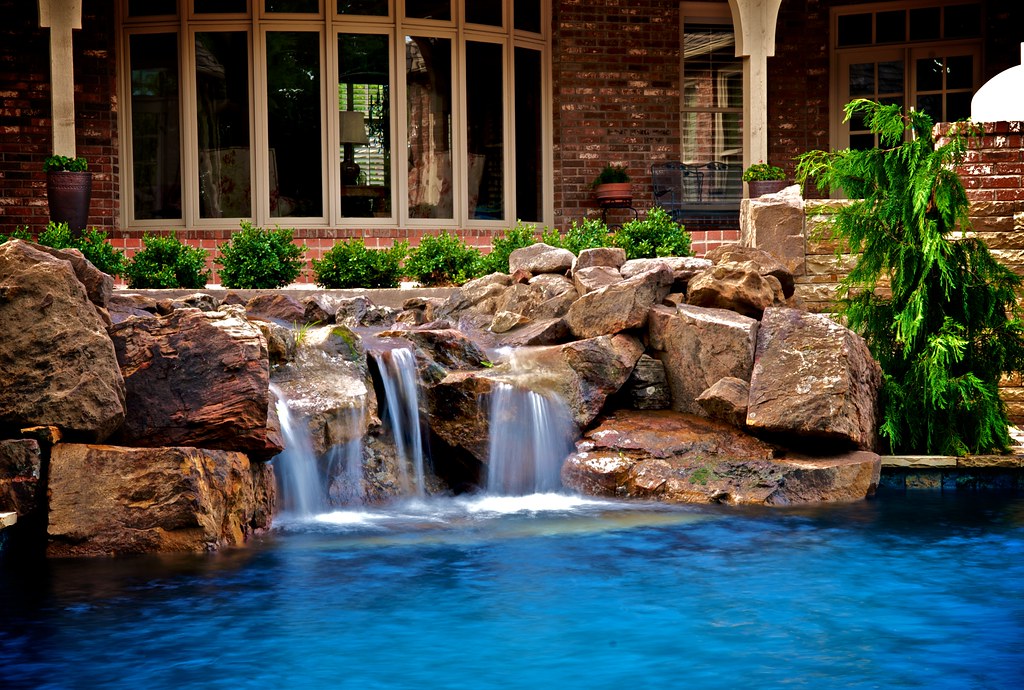 If you plan to install an inground pool, you probably already have ideas about how it should look. But choosing the right pool design isn’t something you should leave to chance.
If you plan to install an inground pool, you probably already have ideas about how it should look. But choosing the right pool design isn’t something you should leave to chance.
The shape you settle on will fundamentally impact the pool’s appearance and your experience using it.
How Will You Use the Pool?
Whether for relaxing or fun family pool time, exercise or lap swimming, or even entertaining guests, how you use your new pool will influence shape options and other design elements. For instance, a curved collection offers more usable square footage for swimming, while a geometric pool may better suit a modern architectural style.
Choosing a pool that complements your home’s architectural style is one of the most important things to consider, as it will contribute to your backyard’s overall look and feel. Choosing pool colors and pavers that coordinate with your house will help you achieve the backyard setting you envision, such as a sleek contemporary aesthetic or a tranquil lagoon environment.
Mapping out your hose layout is an effective exercise to visualize the impact of a new pool on your yard and landscape.
What Are Your Budgetary Needs?
Determining your budget before starting the pool-building process with custom pool design Orange County is essential. This will help you stay on track and prevent unforeseen costs that could derail your project.
The pool shape and construction material will affect your overall cost. Different forms offer varying structural strength requirements and affect how the pool fits into the landscape. For example, a figure 8 pool is rounded on both ends and tapers in the middle. This style is ideal for spaces where depth is a concern and provides plenty of room for features like grottos.
Ultimately, your pool should mesh with your home’s architectural design and landscape to foster aesthetic harmony. Consider matching the pool shape to your home’s rectilinear design for a seamless aesthetic.
What Are Your Architectural Styles?
The pool should reflect the aesthetic of your home and outdoor space to create a cohesive and visually pleasing backyard. A professional pool designer can help you explore various design options that suit your lifestyle and architectural style.
For example, if you have a modern house, a geometric pool shape may be the best choice for your property because of its clean lines and right angles. On the other hand, if you live in a historic home, a freeform pool with organic shapes and curves can evoke your nostalgia.
When it comes to community pools, form follows function. For instance, if you live in a multifamily community with spectacular mountains or ocean views, your collection should blend seamlessly into its surroundings.
What Are Your Privacy Needs?
Privacy is a critical pool component, especially for those who enjoy sunbathing or relaxing in the hot tub. Whether for protection or simply blocking distractions and noises, having privacy around your pool feels good.
Your landscape professional will work with you to create a fence and landscaping strategy that meets your privacy needs while enhancing your backyard’s overall look and feel. Consider options like a tiered garden, which uses shrubs and trees with varying heights to offer privacy without blocking out natural light.
To make the best design choices for your client, show them how to use their pool at different times of day with an interactive 3D visualization. You can also reveal how color-changing pool lights will transform the water at night.
What Are Your Future Plans?
Your pool will be in use for a long time, so it makes sense to explore your options. You’ll want a professional designer to help you decide on features that enhance its appearance and create a visual interest. For example, a geometric shape with crisp angles or novel step designs can bring the pool to life. Another dramatic option is an infinity pool that blends the water with a vista.
You’ve probably already invested in your home’s architecture and landscaping, so you want the new pool to blend into what is there. A modern house would be best suited with a design similar in style to the building, while a more traditional home may look better with a more organic look.






